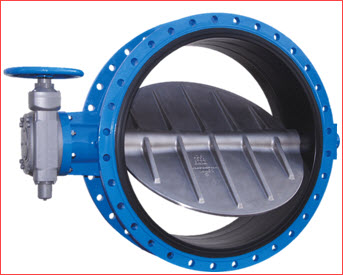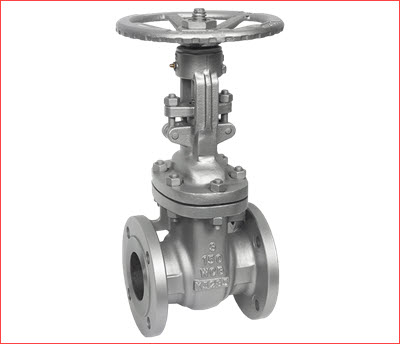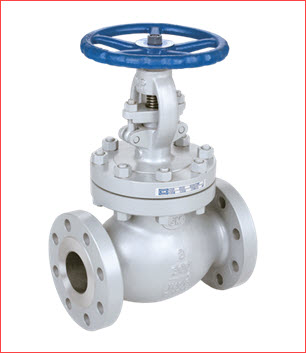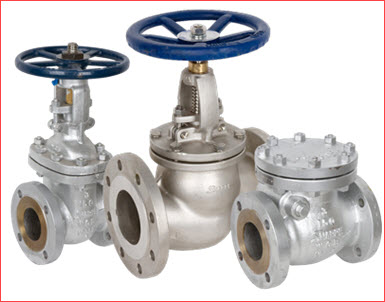There are a large variety of valves to choose from. As they serve different functions, the quality is aligned depending if it is for engineering, manufacturing, scientific, or industrial communities. Most clients are a bit off when it comes to selecting the right valve. All valves are entitled to a durable quality and longer lifespan. Yet when they are not applied to the services they best suit, quality no longer becomes a basis.
⇒ Best 12 Ppsspp games for android device
The failure and the success of how a valve function depends on the selection of the right valve. For smoother system operations, we suggest conducting research prior to purchase to broaden the potential options. Knowing that valves are responsible for regulating and stopping transport operations, ensure that the chosen type of valve suits the condition. Here are different types of valve and their best-suited application.
Butterfly Valve

(Image Source: miv.hr)
The butterfly valve is known for its wing-like action of control. It contains a disc inside which is the fundamental key to regulating the flow of materials. Most clients who use butterfly valves are designated for flow isolation knowing that these have limited control capability. For easy control over operations, they consider XHVAL butterfly valve because it only requires the handle rotated at 90 degrees. One of its best features is being able to operate it pneumatically, electronically, and manually.
Application
- Suggested for low pressure and temperature corrosive liquids.
- They are valves which are best used for chemical, pharmaceutical, and food processing services.
Advantages
- Butterfly valves are advantageous in terms of industrial applications
- They are capable of throttling flow.
- Even without pipe system dislocation, they can be easily be installed or removed.
- They don’t require much maintenance checks but with undeniable reliability.
Disadvantages
- There are no secured tight shut offs
- Use of butterfly valves may result in pressure switch considering that a portion of the disc is present in the flow
Gate Valve
(Image Source:svf.net)
One of the most used valves is gate valves. They are mostly designed for plumbing and controlling different types of liquid. It is a secure and safe way of regulating the flow rate of transportation of liquid materials. Gate valves are commonly used for residential and industrial purposes. They are known for its durability because of its excellent material composition such as cast iron, stainless steel, forged steel, and alloy steel.
Application
- Secured on and off with the transportation of liquid materials
- They are best suited in conditions with high temperature and high pressure
- Gate valves are popular for industrial piping utilization
Advantages
- The pressure loss is minimal considering that it provides laminar flow
- They contain low friction loss during operations
- With or without the circuit, they can still be operated
- When the valve is tightly sealed or fully opened, low-pressure drops are possible
- It reduces the demand for energy needed resulting in low-cost operations
Disadvantages
- It requires time to rotate the wheel for opening and closing securely
- Gate valves require complex maintenance, operations, and repairs
- During operations, they cause vibrations
- When systems involve an irregular change in temperature, leakages are possible
Globe Valve
(Image Source: gmengg.com)
Globe valves are also known as stop valves. They are popular because they are known for a variety of services of the application. As one of the most commonly used valve, they follow a changing course during operations. The changing course results in increased resistance to flow and sudden pressure drop. Similar to what gate valves can do, globe valves are ought to follow a linear motion to throttle the flow of materials.
Application
- Designed for applications involving throttling
- Globe valves can deal with high-temperature operations
Advantages
- Globe valves highlight its resistance to throttling capabilities
- They feature a full-closing specification
- They require positive shut-offs
- Compared to gate valves, the on and off control do not require much time
- Globe valves can be utilized as stop-check valves
- The process of body ring seating is not complex
Disadvantages
- They experience high cases of pressure loss
- Compared to other valves, globe valves require an increased amount of force to stop the operation under a higher pressure
Check Valve
(Image Source:sharpevalves.com)
Check valves are also referred to as non-return valve or NRV. They are designed to regulate flow in one direction preventing cases of backflow. Reversing or flowing to the reverse direction is what they are trying to avoid by simply using check valves. The reversal in operations has the ability could damage the whole operating system. Check valves prevent this kind of scenario promoting smooth operations in transporting liquid and gas materials.
Application
- They are made of versatile materials which makes them durable for different applications
- Check valves are usually used in supporting waste-water management systems
- They maintain the flow of material transportation
- They cater to industries like water, petrochemical, oilfield production, and other viscous liquids
Advantages
- Check valves help in maintaining one direction in flow. They prevent back flows from happening and affecting operations.
- They can also be used as a backup system
- They are commonly known in catering to industrial needs because of their high resistance to pressure
Disadvantages
- Check valves are not suggested in supporting pulsating systems
- Susceptible to damage when closing the element
Conclusion
There is a variety of valve manufacturers in the market providing options for different industrial, mechanical, and engineering needs. These four examples are just the start of the list. They are most commonly used but there are still a lot of types of valves. To ensure the functionality of the structure, you have to be mindful about the type of valve that should be installed. Always consider the quality above all because this will save you from expenses and malfunctions at the same time.



